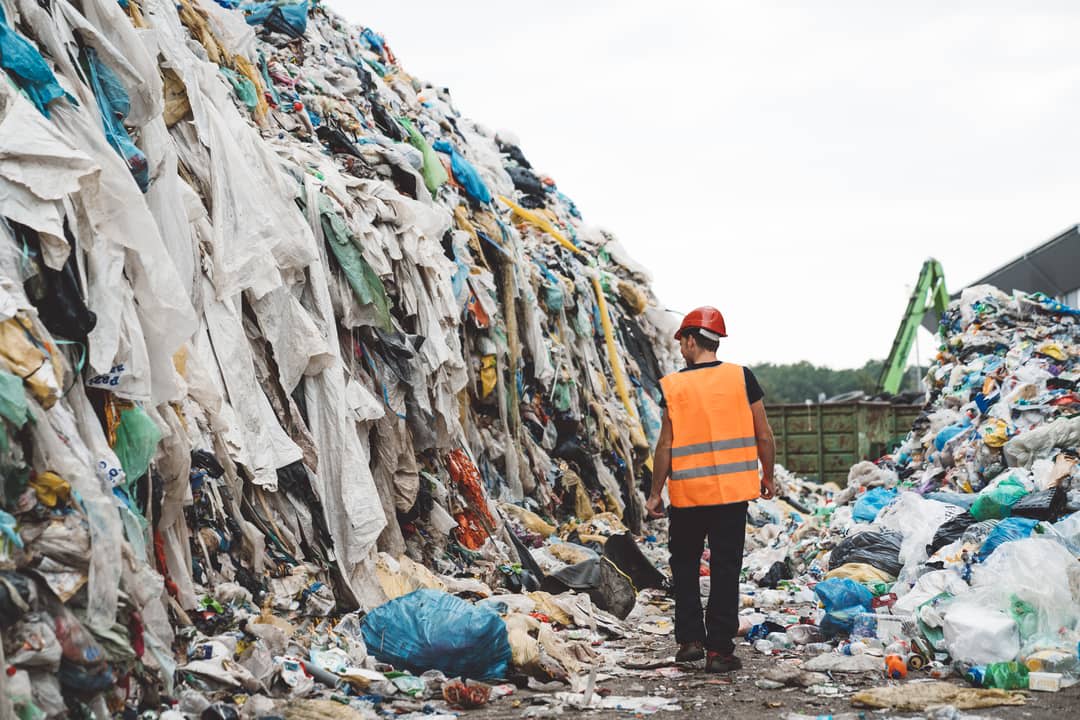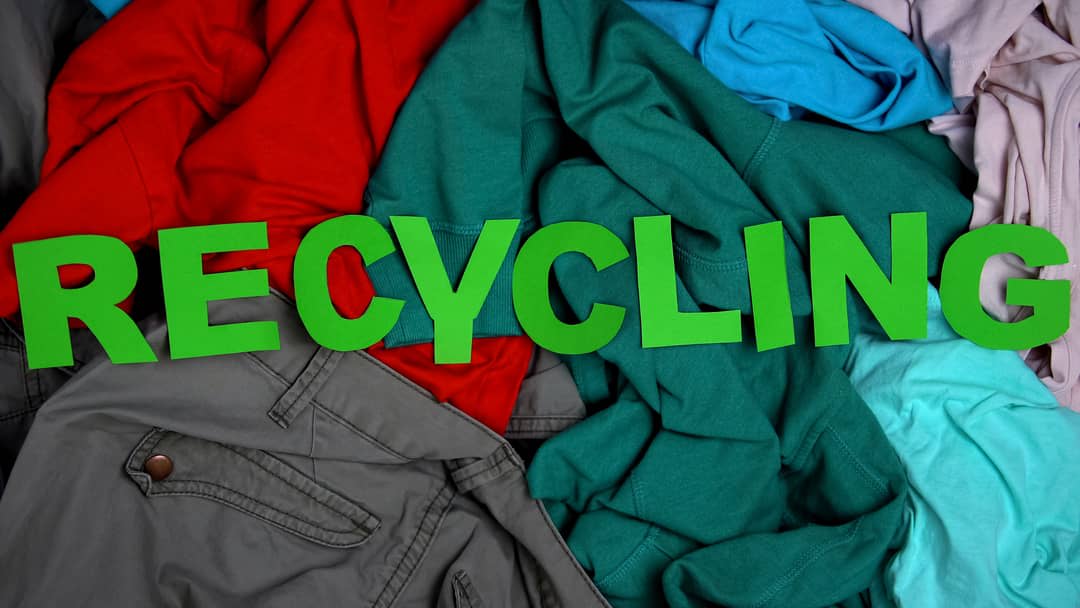Sustainable fashion. Is it actually a real thing?
Julie Boulton
Project Manager, Monash Sustainable Development Institute
Aleasha McCallion
Strategic Projects Manager, Monash Sustainable Development Institute
Jim Curtis
Senior Research Fellow, BehaviourWorks Australia, MSDI
There have been numerous discussions, webinars, articles and social media posts recently about green fashion, sustainable fashion and eco fashion – and much of this is about establishing a clear understanding and definitions.
While robust debates about definitions will continue, this shouldn’t distract our attention from efforts to unpack the sustainability credentials of what we wear, and the implications it has for the planet.

Fashion – at least the way it’s practised by the mainstream market – has some very serious consequences for the health of our world. Examples of the significant negative impacts of the production and consumption of fashion globally include:
- High use of virgin materials, with new material making up 94% of clothing and textile production content
- Uses 79 billion cubic metres of fresh water annually
- Emits between 4% and 10% of the total global amount of greenhouse gas (GHG) emissions
- Uses toxic chemicals in clothing production (the European Union classifies 165 chemicals commonly used in clothing production as hazardous to human health and the environment).
This list is illustrative, not exhaustive, of the many significant issues across the fashion industry that require tackling, and leads us to ask: What issue do you tackle first?
Not a single, simple fix
Can you, or should you, break down the complexity into single issues – do you aim for incremental changes when the system as a whole may itself require fixing?
These are complex questions that are relevant not only to those looking to “green” our fashion, but for anyone in any sector seeking to identify what changes to make, and when. Undoubtedly, there will be controversy, and missteps, as the road to a more sustainable future is laid.
The recent publication of the article, “Innovative recycling or extended use? Comparing the global warming potential of different ownership and end-of-life scenarios for textiles“, written by Finnish researchers from LUT University and published in April this year, provides an example where one, focused publication results in polemic discussion over what falls into “most sustainable” category in the fashion industry.
Using Life Cycle Assessment (LCA), a technique or methodology that assesses the environmental impacts across all stages of the life cycle of a product, the researchers compared the “global warming potential” (GWP) of five ownership and end-of-life scenarios for creating and using a pair of jeans. The scenarios were:
- BASE: Basic use with waste disposal
- REDUCE: Extended use
- REUSE: Reselling
- RECYCLE: Industrial processing into raw materials
- SHARE: Rental service
Based on a series of assumptions within their LCA modelling (which in our opinion are not without their limitations), the research found that the lowest GWP is achieved in the REDUCE scenario.
The use of rental services is likely to increase customers’ mobility and, if that happens on a large scale, then the SHARE scenario has the highest GWP (approximately 5kg more CO₂ than simply throwing the jeans away).

But it was the SHARE finding that caused a storm, particularly across social media. The majority of the headlines seemed to take an almost schadenfreude attitude towards the finding, as evidenced by the following commentary:
- “Throwing your clothes away is more eco-friendly then renting them”
- “The worst green option“
- “Worse for the planet than just throwing [clothing] away“
- “No cure for fast fashion“.
Is this the conclusion we should be drawing from the research findings? Is rental absolutely not the way to go?
We say no.
What the critics, and the headlines, failed to grasp (or, perhaps, failed to point out in their quest for clicks), was that applying such a reductionist view, that there is only one single silver bullet to what is an incredibly complex issue, is much too simplistic.
Post-publication, in an interview with Clare Press, of the sustainability fashion-focused podcast Wardrobe Crisis, the authors highlighted this, stating:
“We need to be aware of the root causes of sustainability and aim to address those.”
The complexity of the fashion system as a whole, coupled with the fact that there’s not a single solution, corresponds with the findings from our circular textiles research project.
In partnership with the Australian Fashion Council (AFC) and with funding from the Victorian Department of Environment, Land, Water and Planning, we interviewed large manufacturers, retail organisations and SMEs, investigating their appetite to adopt circular economy principles, and to identify factors that may be needed to support a transition.
It was clear from our interviews with industry that no one stakeholder holds the complete solution to circularity.
The complexity of the problem, and to finding solutions, is common across any system transformation process. One way of ensuring the complexity is addressed is to be aware of (and design for) feedback loops or knock-on effects when designing and/or considering what solutions may work.
In practical terms, this means that a “solution”, along with all of its component processes, should be assessed against the whole system to fully understand its positive and negative impacts.
We urgently need more detailed research
It’s been the absence of sufficient analysis – of the fashion system in Australia, in particular – that may have directly contributed to the consternation expressed by many over the LCA research findings from LUT University. Perhaps the lack of the system-wide understanding has resulted in a misplaced belief that there’s an easy solution that will address all the sustainability issues facing the fashion sector.

If sufficient analysis of the whole system here in Australia existed, perhaps it could not be so easily construed/expected or believed that there could be only one solution. It would have been known already that SHARE does not, by itself, solve the harmful environmental impacts of production. It would have also known that SHARE does not, by itself, solve what is a very real growing consumption issue.
This would also confirm that SHARE isn’t to be discarded simply because it doesn’t provide a complete solution.
Instead, it could be seen for perhaps what it really is – a transitory solution that plays an important part in shifting behaviours and patterns of consumption, and that works to drive progress in designing more durable products, designing timeless aesthetics, accelerating carbon-free transport, and pushing forward new cleaning methods. And in so doing, it would also work to ensure that SHARE is as sustainable as possible, and solving the following issues is a relevant part of the process:
- Cleaning (chemical use, excessive, water use, energy)
- Transport (to and from – is it electric transport, bike couriers, carbon-free shipping etc?)
- Quality and durability of a product (lifespan)
- The timeliness of design aesthetic.
There’s emerging progress towards a system-wide analysis of the fashion sector in Australia. The federal government is focused on clothing waste and clothing product stewardship, with the Minister for the Environment listing clothing textiles on the latest national product stewardship priority list.
The Victorian government has taken a broader remit, recently announcing textiles as the priority material for 2021-22 under its Recycling Victoria policy. And here, at MSDI, we’ve worked directly with industry to produce a circular guide to a T-shirt. SHARE was absolutely included in the list of options under use and reuse. But more work needs to be done.
What we now need is work across the whole system – where solutions are placed into the puzzle of the system. For this to work, MSDI would like to see a clearer focus by all parties towards meeting Sustainable Development Goal 12, responsible consumption and production. This will require partnership and collaboration to collectively work towards a sustainable and responsible model in the fashion industry.
It will also mean tackling the issues at the very heart of the problem – overproduction and overconsumption. As our report itself outlines:
“In the textile industry, massive overproduction is a system-level problem that cannot be tackled only with the development of more efficient recycling options for end-of-use products.”
Telling the story of systems-wide change is hard to capture in one catchy headline. The best we’ve come up with is: “SHARE is one part of a group of solutions that need to be tried and tested if we are to collectively pursue a common goal of a sustainable fashion industry in Australia.”
Only through collaboration and co-designing solutions across the complexity of the system, and by setting ourselves a common goal, can we design a pathway, complete with complementary and transitory solutions, that will propel us towards a truly sustainable fashion industry.







